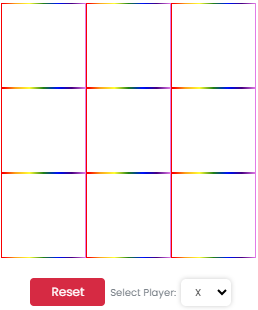Computer-Based Numerical and Statistical Techniques (CBNST) is used to optimize performance and minimize error in the problem-solving application. Methods of numerical analysis are used to approximate the problem satisfactorily so that an approximate solution, amenable to precise analysis, within a desired degree of accuracy is obtained.
CBNST All Parts Book by Manish Goyal - Download In PDF
Computer-Based Numerical and Statistical Techniques (CBNST) Free PDF
All Topics covered in this pdf Book.
PART 1
Chapter 1 Introduction 3—30
1.1 Introduction to Computers 4
1.2 Definitions 4
1.3 Introduction to “C” Language 6
1.4 Advantages/Features of ‘C’ language 7
1.5 ‘C’ Character Set 7
1.6 ‘C’ Constants 8
1.7 “C” Variables 9
1.8 ‘C’ Key Words 10
1.9 “C Instructions” 10
1.10 Hierarchy of Operations 11
1.11 Escape Sequences 12
1.12 Basic Structure of ‘‘C’’ Program 12
1.13 Decision Making Instructions in “C” 14
1.14 Loop Control Structure 17
1.15 Arrays and String 18
1.16 Pointers 19
1.17 Structure and Unions 20
1.18 Storage Classes in ‘C’ 21
Chapter 2 Errors 31—76
2.1 Errors and Their Analysis 31
2.2 Accuracy of Numbers 32
2.3 Errors 34
2.4 A General Error Formula 42
2.5 Errors in Numerical Computations 43
2.6 Inverse Problems 46
2.7 Error in a Series Approximation 56
2.8 Mathematical Preliminaries 60
2.9 Floating Point Representation of Numbers 61
2.10 Arithmetic Operations with Normalized Floating Point Numbers 63
2.11 Machine Computation 71
2.12 Computer Software 72
Chapter 3 Algebraic and Transcendental Equations 77—196
3.1 Bisection (or Bolzano) Method 77
3.2 Algorithm 78
3.3 Flow-Chart 79
3.4 Program Writing 80
3.5 Order of Convergence of Iterative Methods 80
3.6 Order of Convergence of Bisection Method 80
3.7 Convergence of a Sequence 81
3.8 Prove that Bisection Method Always Converges 81
3.9 Program to Implement Bisection Method 84
3.10 Iteration Method—(Successive Approximation Method) 94
3.11 Sufficient Condition for Convergence of Iterations 95
3.12 Theorem 95
3.13 Convergence of Iteration Method 96
3.14 Algorithm for Iteration Method 96
3.15 Flow-Chart for Iteration Method 98
3.16 Computer Program 99
3.17 The Method of Iteration for System of Non-Linear Equations 111
3.18 Method of False Position or Regula-Falsi Method 113
3.19 Algorithm 114
3.20 Flow-Chart 116
3.21 Convergence of Regula-Falsi Method 130
3.22 Secant Method 132
3.23 Lin-Bairstow’s Method or Method for Complex Root 135
3.24 Muller’s Method 141
3.25 Algorithm of Muller’s Method 142
3.26 Flow-Chart for Muller’s Method 144
3.27 The Quotient-Difference Method 152
3.28 Horner’s Method 156
3.29 Newton-Raphson Method 158
3.30 Convergence 159
3.31 Order of Convergence 159
3.32 Geometrical Interpretation 161
3.33 Algorithm of Newton-Raphson Method 161
3.34 Flow-Chart of Newton–Raphson Method 162
3.35 Newton’s Iterative Formulae for Finding Inverse, Square Root 163
3.36 Rate of Convergence of Newton’s Square Root Formula 164
3.37 Rate of Convergence of Newton’s Inverse Formula 164
3.38 Definitions 182
3.39 Methods for Multiple Roots 182
3.40 Nearly Equal Roots 187
3.41 Comparison of Newton’s Method with Regula-Falsi Method 189
3.42 Comparison of Iterative Methods 189
3.43 Graeffe’s Root-Squaring Method 190
3.44 Ramanujan’s Method 195
PART 2
Chapter 4 Interpolation 199—390
4.1 Introduction 199
4.2 Assumptions for Interpolation 200
4.3 Errors in Polynomial Interpolation 200
4.4 Finite Differences 202
4.5 Other Difference Operators 205
4.6 Relation Between Operators 205
4.7 Differences of a Polynomial 207
4.8 Factorial Notation 225
4.9 To Show that (i) Δn[x]n = n ! (ii) Δn+1 [x] n = 0 225
4.10 Reciprocal Factorial 226
4.11 Missing Term Technique 227
4.12 Method of Separation of Symbols 234
4.13 Detection of Errors by Use of Difference Tables 234
4.14 Newton’s Formulae for Interpolation 243
4.15 Newton’s Gregory Forward Interpolation Formula 243
4.16 Newton’s Gregory Backward Interpolation Formula 262
4.17 Central Difference Interpolation Formulae 278
4.18 Gauss’ Forward Difference Formula 278
4.19 Gauss’ Backward Difference Formula 289
4.20 Stirling’s Formula 301
4.21 Bessel’s Interpolation Formula 312
4.22 Laplace-Everett’s Formula 327
4.23 Interpolation by Unevenly Spaced Points 338
4.24 Lagrange’s Interpolation Formula 339
4.25 Error in Lagrange’s Interpolation Formula 357
4.26 Expression of Rational Function as a Sum of Partial Fractions 359
4.27 Inverse Interpolation 360
4.28 Divided Differences 361
4.29 Properties of Divided Differences 362
4.30 Newton’s General Interpolation Formula or Newton’s Divided Difference Interpolation Formula 363
4.31 Relation Between Divided Differences and Ordinary Differences 364
4.32 Merits and Demerits of Lagrange’s Formula 365
4.33 Hermite’s Interpolation Formula 381
PART 3
Chapter 5 Numerical Integration and Differentiation 393—476
5.1 Introduction 393
5.2 Numerical Differentiation 394
5.3 Formulae for Derivatives 394
5.4 Maxima and Minima of a Tabulated Function 402
5.5 Errors in Numerical Differentiation 422
5.6 Numerical Integration 423
5.7 Newton-cote’s Quadrature Formula 423
5.8 Trapezoidal Rule (n = 1) 424
5.9 Simpson’s One-third Rule (n = 2) 425
5.10 Simpson’s Three-Eighth Rule (n = 3) 426
5.11 Boole’s Rule 426
5.12 Weddle’s Rule (n = 6) 427
5.13 Algorithm of Trapezoidal Rule 429
5.14 Flow-Chart for Trapezoidal Rule 430
5.15 Program to Implement Trapezoidal Method of Numerical Integration 431
5.16 Output 433
5.17 Algorithm of Simpson’s 3/8th Rule 433
5.18 Flow-Chart of Simpson’s 3/8th Rule 434
5.19 Program to Implement Simpson’s 3/8th Method of Numerical Integration 435
5.20 Output 437
5.21 Algorithm of Simpson’s 1/3rd Rule 437
5.22 Flow-Chart of Simpson’s 1/3rd Rule 438
5.23 Program to Implement Simpson’s 1/3rd Method of Numerical Integration 439
5.24 Output 441
5.25 Euler-Maclaurin’s Formula 461
5.26 Gaussian Quadrature Formula 463
5.27 Numerical Evaluation of Singular Integrals 465
5.28 Evaluation of Principal Value Integrals 466
PART 4
Chapter 6 Numerical Solution of Ordinary Differential Equations 479—544
6.1 Introduction 479
6.2 Initial-Value and Boundary-Value Problems 480
6.3 Single Step and Multi-Step Methods 480
6.4 Comparison of Single-Step and Multi-Step Methods 480
6.5 Numerical Methods of Solution of O.D.E. 480
6.6 Picard’s Method of Successive Approximations 481
6.7 Picard’s Method for Simultaneous First Order Differential Equations 488
6.8 Euler’s Method 492
6.9 Algorithm of Euler’s Method 493
6.10 Flow-Chart of Euler’s Method 494
6.11 Program of Euler’s Method 495
6.12 Modified Euler’s Method 496
6.13 Algorithm of Modified Euler’s Method 497
6.14 Flow-Chart of Modified Euler’s Method 498
6.15 Program of Modified Euler’s Method 499
6.16 Taylor’s Method 506
6.17 Taylor’s Method for Simultaneous I Order Differential Equations 508
6.18 Runge-Kutta Methods 513
6.19 Fourth Order Runge-Kutta Method 515
6.20 Runge-Kutta Method for Simultaneous First Order Equations 519
6.21 Predictor-Corrector Methods 525
6.22 Milne’s Method 525
6.23 Adams-Moulton (or Adams–Bashforth) Formula 537
6.24 Stability 541
6.25 Stability in the Solution of Ordinary Differential Equations 542
6.26 Stability of I Order Linear Differential Equation of Form dy/dx = Ay with Initial Condition y(x0) = y0 542
PART 5
Chapter 7 Statistical Computation 547—670
7.1 Statistical Methods 547
7.2 Limitation of Statistical Methods 547
7.3 Frequency Charts 548
7.4 Graphical Representation of a Frequency Distribution 550
7.5 Types of Graphs and Diagrams 550
7.6 Histograms 551
7.7 Frequency Polygon 552
7.8 Frequency Curve 552
7.9 Cumulative Frequency Curve or the Ogive 553
7.10 Types of Frequency Curves 553
7.11 Diagrams 555
7.12 Curve Fitting 556
7.13 Principle of Least Squares 556
7.14 Fitting a Straight Line 558
7.15 Algorithm for Fitting a Straight Line of the Form y = a + bx for a Given Set of Data Points 559
7.16 Flow-Chart for Fitting a Straight Line y = a + bx for a Given Set of Data Points 560
7.17 Program to Implement Curve Fitting to Fit a Straight Line 561
7.18 Fitting of an Exponential Curve y = aebx 569
7.19 Fitting of the Curve y = axb 569
7.20 Fitting of the Curve y = abx 569
7.21 Fitting of the Curve pvr = k 570
7.22 Fitting of the Curve of Type xy = b + ax 570
7.23 Fitting of the Curve y = ax2 + b/x 570
7.24 Fitting of the Curve y = ax + bx2 571
7.25 Fitting of the Curve y = ax + b/x 572
7.26 Fitting of the Curve y = a + b/x + c/x2 573
7.27 Fitting of the Curve y = c0/x + c1 x 573
7.28 Fitting of the Curve 2x = ax2 + bx + c 574
7.29 Most Plausible Solution of a System of Linear Equations 586
7.30 Curve-Fitting by Sum of Exponentials 588
7.31 Spline Interpolation 594
7.32 Spline Function 594
7.33 Cubic Spline Interpolation 594
7.34 Steps to Obtain Cubic Spline for Given Data 597
7.35 Approximations 601
7.36 Legendre and Chebyshev Polynomials 601
7.37 Legendre Polynomials 601
7.38 Chebyshev Polynomials 602
7.39 Special Values of Chebyshev Polynomials 603
7.40 Orthogonal Properties 603
7.41 Recurrence Relations 603
7.42 Aliter to Find Chebyshev Polynomials 604
7.43 Expression of Powers of x in terms of Chebyshev Polynomials 604
7.44 Properties of Chebyshev Polynomials 605
7.45 Chebyshev Polynomial Approximation 605
7.46 Lanczos Economization of Power Series for a General Function 606
7.47 Regression Analysis 614
7.48 Curve of Regression and Regression Equation 614
7.49 Linear Regression 614
7.50 Lines of Regression 614
7.51 Derivation of Lines of Regression 615
7.52 Use of Regression Analysis 618
7.53 Comparison of Correlation and Regression Analysis 618
7.54 Properties of Regression Co-efficients 619
7.55 Angle between Two Lines of Regression 620
7.56 Algorithm for Linear Regression 621
7.57 Program to Implement Least Square Fit of a Regression Line of y on x 622
7.58 Program to Implement Least Square Fit of a Regression Line of x on y 623
7.59 Polynomial Fit: Non-linear Regression 639
7.60 Multiple Linear Regression 652
7.61 Statistical Quality Control 654
7.62 Advantages of Statistical Quality Control 656
7.63 Reasons for Variations in the Quality of a Product 657
7.64 Techniques of Statistical Quality Control 657
7.65 Control Chart 658
7.66 Objectives of Control Charts 658
7.67 Construction of Control Charts for Variables 659
7.68 Control Charts for Attributes 661
Chapter 8 Testing of Hypothesis 671—728
8.1 Population or Universe 671
8.2 Sampling 672
8.3 Parameters of Statistics 672
8.4 Standard Error 672
8.5 Test of Significance 673
8.6 Critical Region 674
8.7 Level of Significance 674
8.8 Errors in Sampling 674
8.9 Steps in Testing of Statistical Hypothesis 676
8.10 Test of Significance for Large Samples 676
8.11 Test of Significance of Small Samples 690
8.12 Student’s t-Distribution 691
8.13 Test I: t-test of Significance of the Mean of a Random Sample 692
8.14 Test II: t-test for Difference of Means of Two Small Samples
(From a Normal Population) 695
8.15 Snedecor’s Variance Ratio Test or F-test 703
8.16 Chi-square (χ2) Test 708
8.17 The χ2 Distribution 710
8.18 χ2 Test as a Test of Goodness of Fit 711
8.19 χ2 Test as a Test of Independence 718
PART 6 APPENDICES
Appendix A (Answers to Selected Exercises) 731
Appendix B (Sample Examination) 743
Appendix C (About the CD-ROM) 747
Index
Download Computer-Based Numerical and Statistical Techniques (CBNST) Free PDF.
By - M. GOYAL.







Write a comment